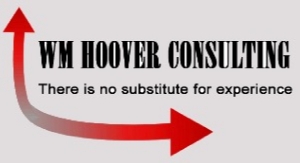
“I always strive to provide the best engagement for each client and deliver results that will have a lasting impact.”

PRODUCT DEVELOPMENT PROCESS
This includes both the design control elements of the quality system regulations as well as the non-controlled elements such as schedules and budgets. An effective process needs to take into consideration the company's decision-making culture, those processes and documents which need to be compliant and those processes and documents which do not.


IN FURTHER DETAIL...
For a startup company the issues that need to be addressed are primarily around the fact that there is a lack of formality and discipline, and in many cases the products are not at a stage where design control is required. In a new technology start up, hiring typically focuses on individuals who can enable the new technology. These individuals usually do not have a significant depth of regulated industry experience. These engagements consist of developing the process to be compliant, or to have a strategy for becoming compliant at the appropriate time. I typically help the company define the new process, create the supporting SOP's and train the staff. If supporting software tools are appropriate, such as an electronic documentation tool, I will assist in evaluating the tools, configuring them to support the company's process, write the appropriate SOP's and again train the staff. Validating the software can also be part of the engagement.
For mature companies, the issues usually involve either a lack of efficiency or a compliance failure. Sometimes the processes become too complex simply due to additions and updates that have occurred over time. A frequent observation is that a large management consulting company was hired to create the process and they did not have adequate domain experience to define the correct elements and relationships required in the process. Staff reactions to improvements may be, “We have never done it that way”, reinforced by the fact that long-term employees have in fact never been exposed to alternative methods. These reactions must be considered as part of the engagement.
Engagements can range from a simple gap analysis on selected documents or can involve major rewrites of SOPs, staff training, software acquisition and configuration.

REQUIREMENTS MANAGEMENT
Developing product requirements is a key activity at the beginning of a project. Elucidating and analyzing customer requirements and then elaborating them into requirements for the system being developed and its subsystems all occur as part of Requirements Management. While it is a part of product development, Requirements Management is so critical that it is frequently the basis of consulting engagements.


IN FURTHER DETAIL...
While requirements are such a critical phase of a project and there are specific regulatory guidelines required to be in design control compliance, requirements management is rarely performed well. There are numerous pitfalls which companies frequently encounter.
Some of the isssues are:
-Not differentiating properly between customer requirements and user requirements.
-Not having an appropriate requirement document tree, which matches the actual product's structure. For example, a diagnostic instrument would be a system with multiple subsystems such as software, hardware, disposables and reagents.
-Not differentiating between customer requirements and business requirements.
Adding design requirements to requirement documents is a frequent mistake. Not having metadata associated with the requirements hinders appropriate decision-making on a project. Frequently traceability is not handled in a logical, straightforward manner.
Engagements for Requirements Management range from simple document reviews and gap analysis to the development of a complete system consisting of SOP's, software selection, configuration and validation, and training to support the entire process.